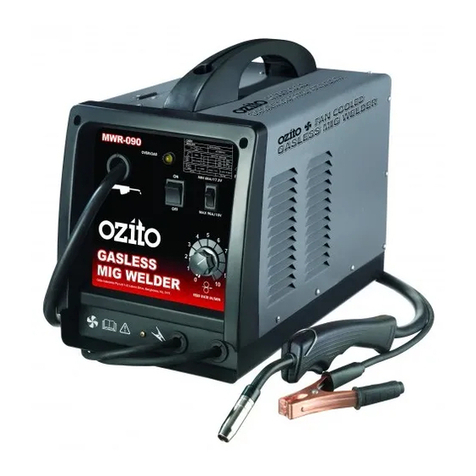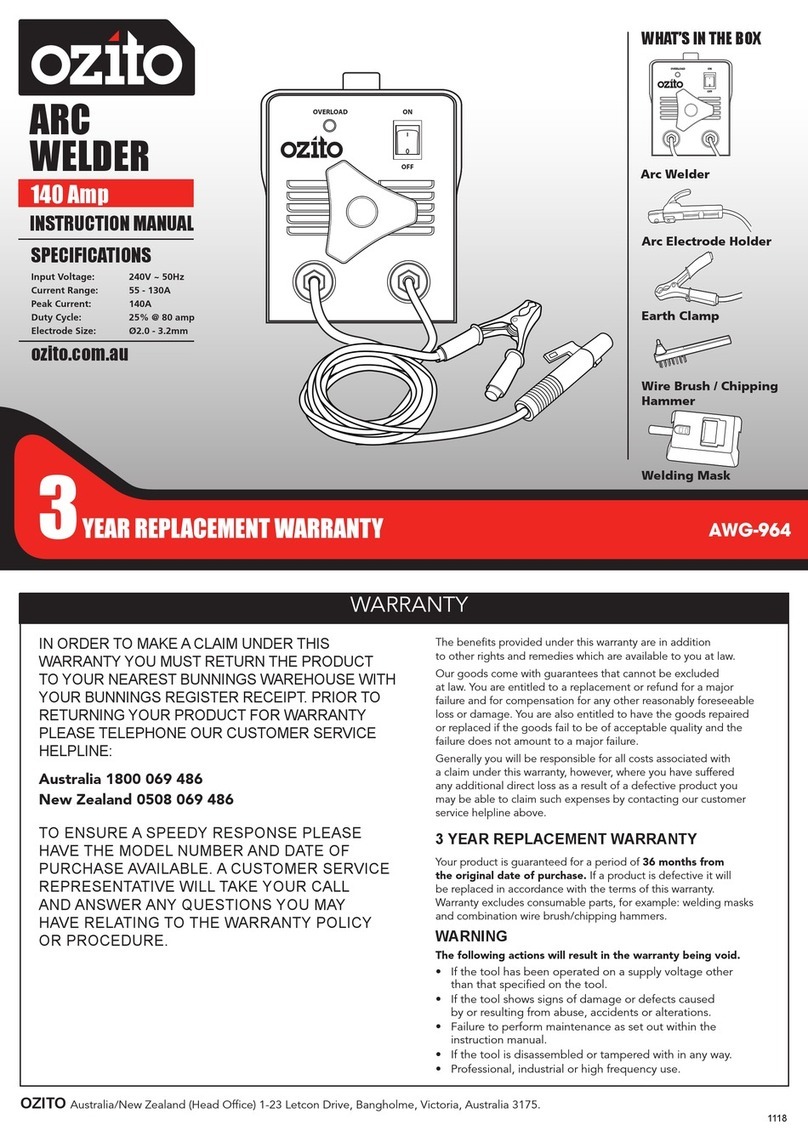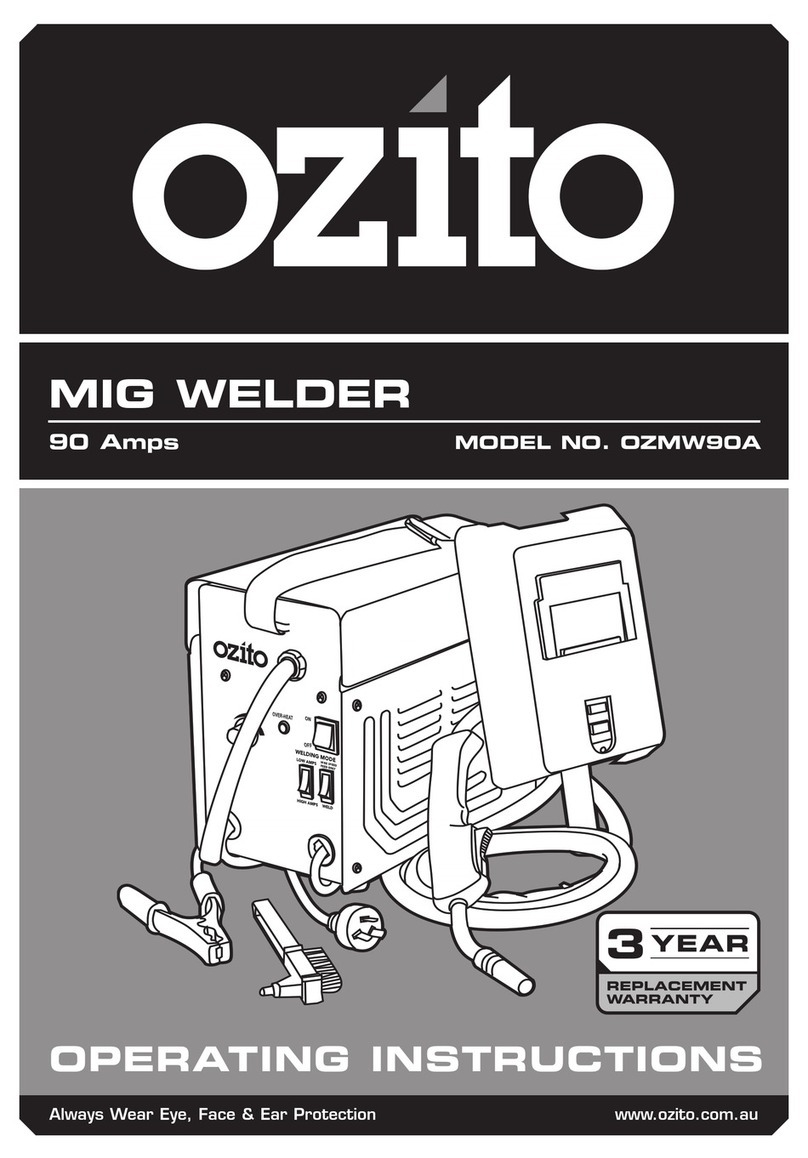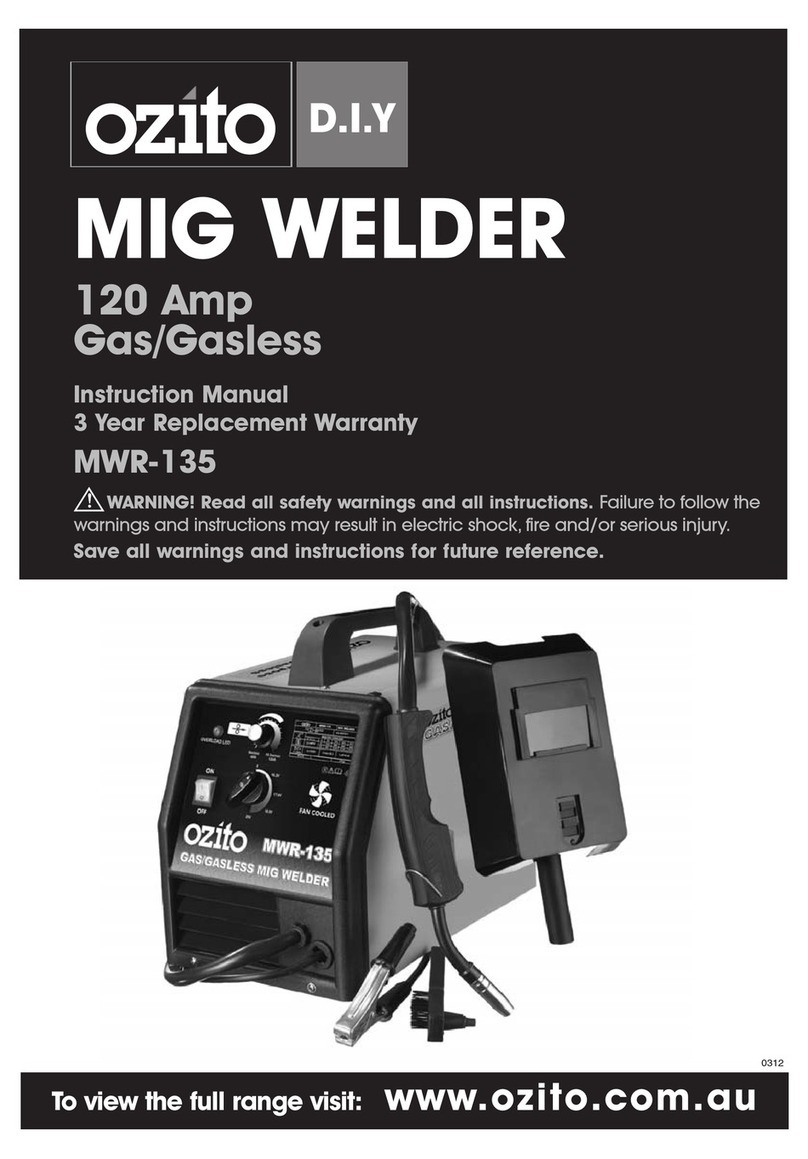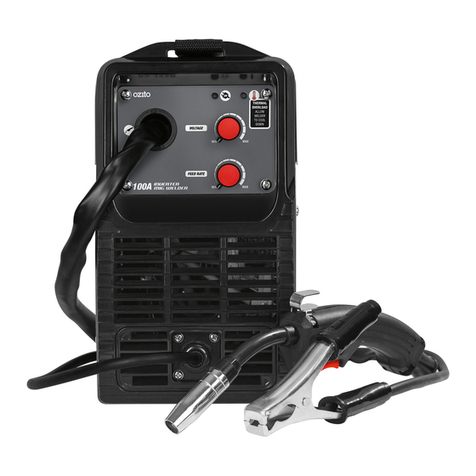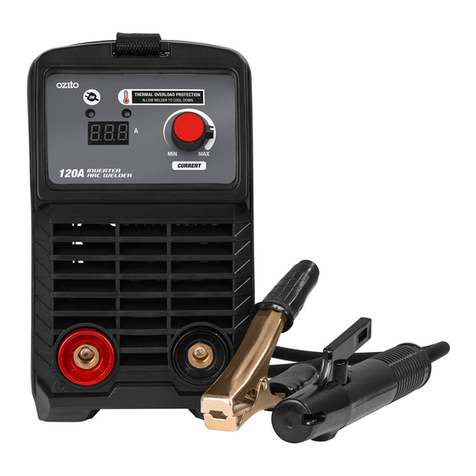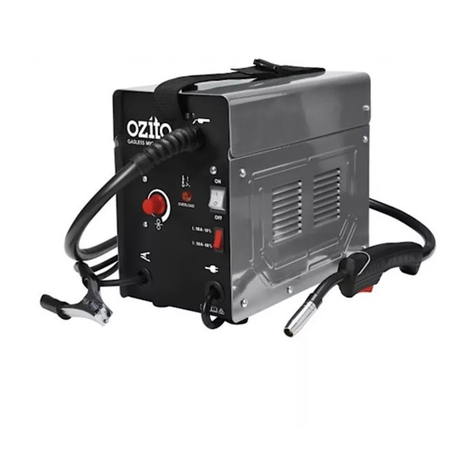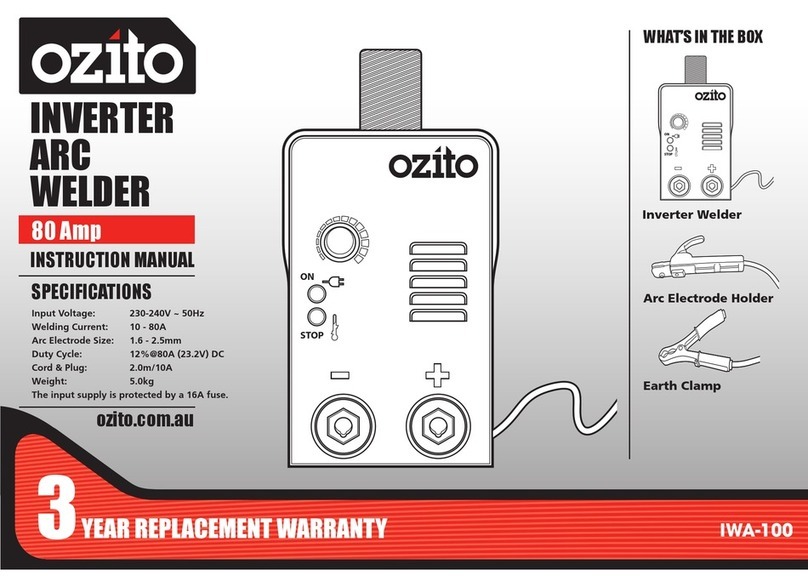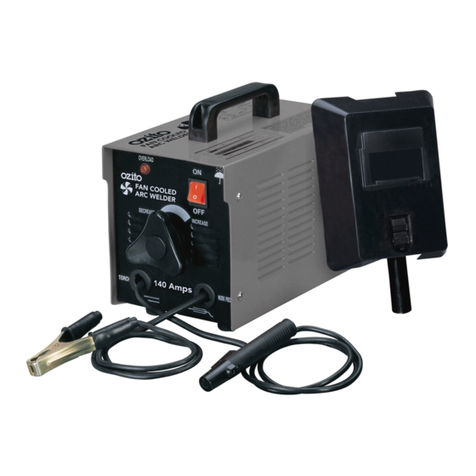Items supplied
Please check that the article is complete as
specied in the scope of delivery. If parts are
missing, please contact our service center or the
sales outlet where you made your purchase at
the latest within 5 working days after purchasing
the product and upon presentation of a valid bill
of purchase. Also, refer to the warranty table in
the service information at the end of the operating
instructions.
• Open the packaging and take out the equip-
ment with care.
• Remove the packaging material and any
packaging and/or transportation braces (if
available).
• Check to see if all items are supplied.
• Inspect the equipment and accessories for
transport damage.
• If possible, please keep the packaging until
the end of the guarantee period.
Danger!
The equipment and packaging material are
not toys. Do not let children play with plastic
bags, foils or small parts. There is a danger of
swallowing or suocating!
Proper use
The machine is to be used only for its prescribed
purpose. Any other use is deemed to be a
case of misuse. The user / operator and not the
manufacturer will be liable for any damage or
injuries of any kind caused as a result of this.
The equipment is to be used only for its prescri-
bed purpose. Any other use is deemed to be a
case of misuse. The user / operator and not the
manufacturer will be liable for any damage or inju-
ries of any kind caused as a result of this.
Please note that our equipment has not been de-
signed for use in commercial, trade or industrial
applications. Our warranty will be voided if the
machine is used in commercial, trade or industrial
businesses or for equivalent purposes.
Symbols and technical data
Input voltage: ............................230V~ 50 / 60Hz
Welding current: ................................... 10-130A
Arc electrode size: ........................... 1.6 - 3.2mm
Tungsten electrode size: ................. 1.6 / 2.4 mm
ARC duty cycle: ............... 25% / 130A (25.2) DC
TIG duty cycle:................. 25% / 130A (15.2) DC
Insulation: ................................................ Class I
Protection type:........................................IP 21 S
EN 60974-1 European standard for
welding sets for manual arc
welding with limited on time.
Single-phase static frequency
converter transformer rectierr
~ 50 / 60 Hz Alternating current and
rated frequency value [Hz]
U0Rated idling voltage [V]
130 A/ 25.2 V Maximum welding current and
130 A/ 15.2 V the corresponding
standardized operating
voltage [A/V]
Ø Electrode diameter [mm]
I2Welding current [A]
Line input; number of phases,
the alternating current symbol
and the rated frequency value
U1Line voltage [V]
I1max Highest rated value of the line
current [A]
I1e Eective value of the highest
line current [A]
HInsulation class
XOn-load factor
Symbol for manual arc
welding with sheated rod
electrodes
Symbol for TIG (tungsten
inert gas) welding
IP 21 S Protection type
Thoroughly read and
understand the operating
instructions prior to using the
welder
Welding
Electrode (Ø mm): Welding current (A)
1.6 35 – 45
2.5 60 – 100
3.2 100 – 130
Electrode (tungsten needle)
diameter (mm)
Welding current (A)
1.6 10 – 140
2.4 10 – 250
Caution!
Residual risks
Even if you use this electric power tool in ac-
cordance with instructions, certain residual
risks cannot be rules out. The following ha-
zards may arise in connection with the equip-
ment’s construction and layout:
1. Lung damage if no suitable protective dust
mask is used.
2. Damage to hearing if no suitable ear protecti-
on is used.
3. Health damage caused by hand-arm vibra-
tions if the equipment is used over a pro-
longed period or is not properly guided and
maintained.
Safety clothing
1. While working, the welder must protect his en-
tire body from radiation and burns by wearing
suitable clothing and a face guard.
2. Slip-on gloves made of a suitable material
(leather) must be worn on both hands. They
must be in perfect condition.
3. Suitable aprons must be worn to protect clo-
thing from sparks and burns. A safety suit and,
if necessary, head protection must be worn if
required by the type of work in question, e.g.
overhead welding.
4. The protective clothing used as well as all
accessories must be in compliance with the
“Personal safety equipment” EU Directive.
Protection from radiation and burns
1. Provide information about the risk to eyes at
the working site in the form of a poster with
the wording “Caution – do not look at the a-
mes”. Workplaces are to be screened o
wherever possible so that personnel in the
vicinity are protected. Unauthorized persons
are to be kept away from the welding work.
2. The walls in the immediate vicinity of statio-
nary workplaces should not have a light color
or a sheen. Windows up to head height are
to be protected against radiation passing th-
rough them or reecting o them, for example
by coating them with a suitable paint.
For EU countries only
Never place any electric power tools in your
household refuse.
To comply with European Directive 2012/19/EC
concerning old electric and electronic equipment
and its implementation in national laws, old
electric power tools have to be separated from
other waste and disposed of in an environment-
friendly fashion, e.g. by taking to a recycling
depot.
Recycling alternative to the return request:
As an alternative to returning the equipment to
the manufacturer, the owner of the electrical
equipment must make sure that the equipment
is properly disposed of if he no longer wants to
keep the equipment.The old equipment can be
returned to a suitable collection point that will
dispose of the equipment in accordance with the
national recycling and waste disposal regulations.
This does not apply to any accessories or aids
without electrical components supplied with the
old equipment.
1~ 50 / 60 Hz
Highest welding time rated value in continuous
mode tON (max) for highest welding current rated
value at an ambient temperature of 20 °C, expres-
sed in minutes and seconds.
Highest welding time rated value in intermittent
mode ΣtON for highest welding current rated value
at an ambient temperature of 20 °C over an un-
interrupted time of 60 min, expressed in minutes
and seconds.
1~ f1f2
Beiblatt_IWT_130U.indd 2 06.03.2017 10:00:31






